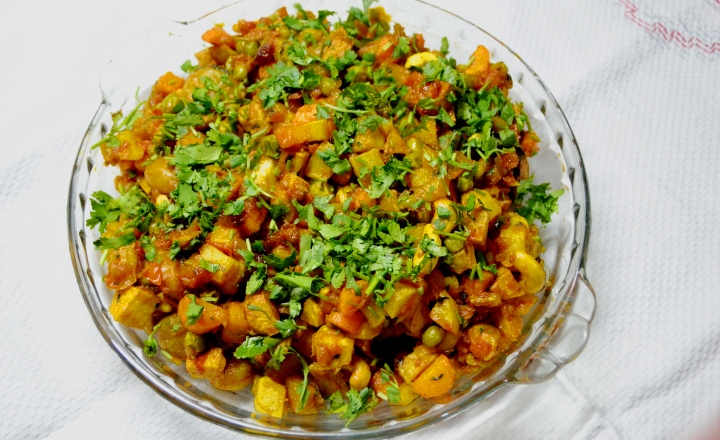
Parsi cuisine has some wonderful vegetarian gems. I shot a recipe of the lagan nu stew recipe with Nilufer Dhondy and Farida Variava a few years ago. In general, Parsis and vegetarian food don’t usually get along. The cuisine is largely focussed on meat and to some extent fish. I’ve noticed Parsi men having little tolerance to pure vegetable dishes and love meat in all their meals. Parsi homemakers on the other hand have always understood the importance of vegetables and the nutrition they provide. Hence there’s always a conscious effort to add vegetables to the family diet. Dhansak, a Parsi staple has the appereance of being a mutton dish. It is and it isn’t. I’ve always thought of dhansak as a lentil and vegetable dish, which is the base for the meat to be cooked in. The vegetables in Dhansak are in a form of a paste, hence not visible.
The first lot of Parsis came to India from Persia some 900 to 1000 years ago. They were the kings of Persia and fled after they lost the war to the Arab army. They landed in Gujarat and sought asylum here. The local king sent them a messenger that they weren’t welcome here. The Parsis then sent three of their wise men to meet the king. The king in usual Indian politeness offered them a glass of milk full upto the brim. Indicating that his kingdom was full and there was no space for Parsis here.
One of the wise men then took out some sugar from his bag and added this to the glass of milk. Meaning that the Parsis would sweeten the king’s land as they’d, with the milk without the milk overflowing from the cup. The King was very impressed and the Parsis stayed on. But on four pre conditions – They would adopt local customs, wear the same clothes, speak the same language and won’t carry any arms with them.
Parsi cuisine has largely been influenced by Gujarati flavours and cooking techniques. But they were also very anglicised during the British rule and liked to give European names to their dishes. The Lagan nu stew is a special dish made during weddings and festive occasions. Unlike classic European stews, it’s more like a thick masala gravy with apricots to give it sweetness and for some reason got an anglicised name.
Here’s the Lagan nu stew recipe by Nilufer Dhondy and Farida Variava.
Serves 3-4 people
Preparation time – 15 to 20 minutes
Cooking time – 35 to 45 minutes
Kadai / Saucepan / Any cooking vessel for deep frying and sautéing – 1 number
Ladle (for stirring) – 1 number
Big bowl – 1 number
Small bowls – 7-8 numbers
Cut the potato, pumpkin, sweet potato and carrot into medium size cubes. Fry them one by one in cooking oil (as each vegetable as a separate cooking time, best to fry them separately). Fry the cashew and raisin. Add all the fried vegetables, cashew and raisin in a big bowl. In the same oil, fry the chopped onion for 6-7 minutes till they change colour. Add the ginger garlic paste and cook for another 3-4 minutes. Add the Parsi Dhanajeeru masala, red chilly powder and turmeric powder. Cook this for another 7-8 minutes. Then add the chopped tomato, salt and sugar. Cook for another 12-15 minutes till the tomatoes soften and add the Parsi Kolah vinegar. Now add the fried vegetables, cashew, raisin and stewed apricot to the cooked mixture. Cook for 2-3 minutes and add chopped coriander leaves at the end.
Serve warm.
Here’s the video of Nilufer Dhondy and Farida Variava showing how to make the lagan nu stew recipe.
Happy cooking and chowder-on!
Categories:
Tags: